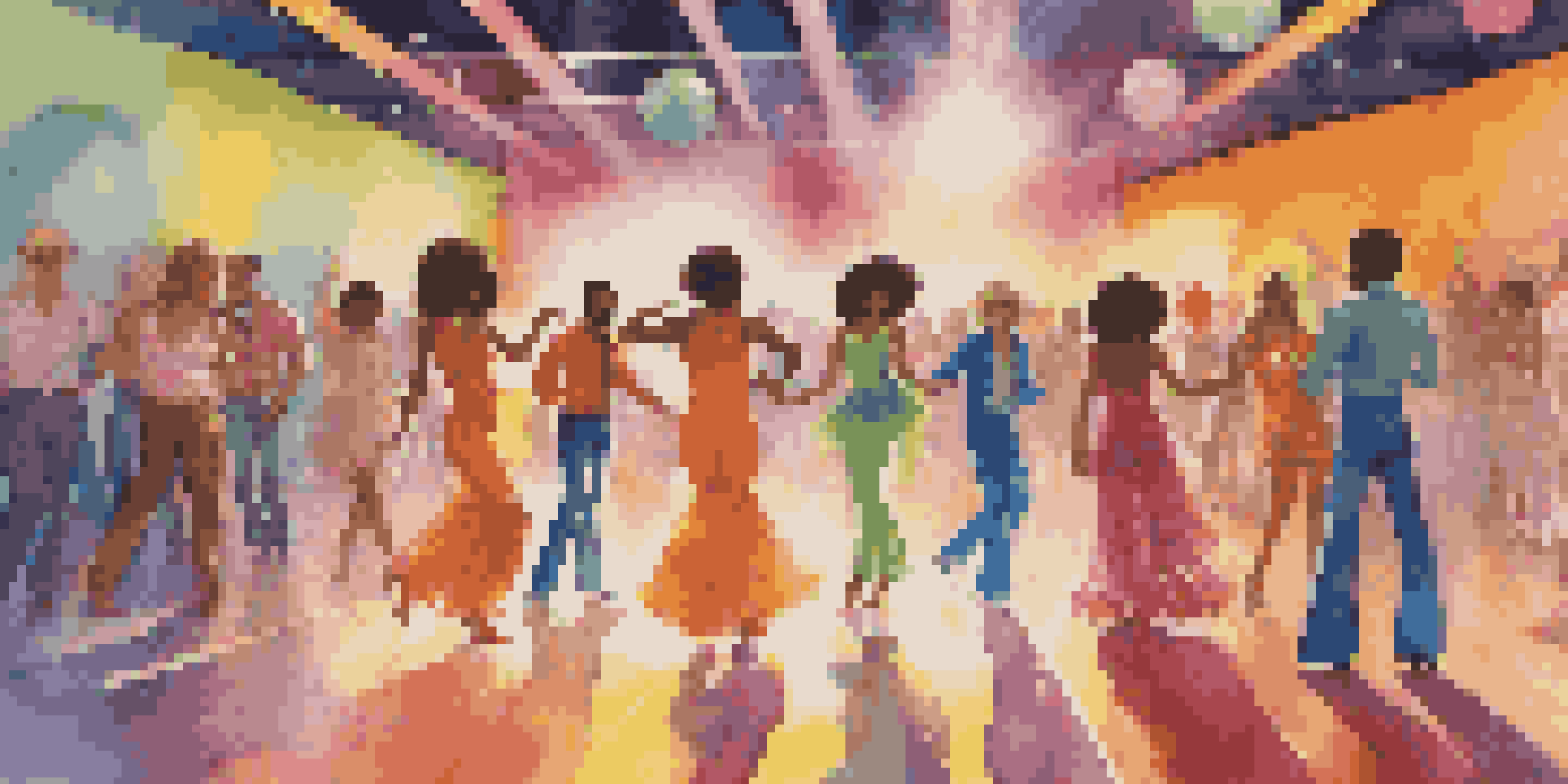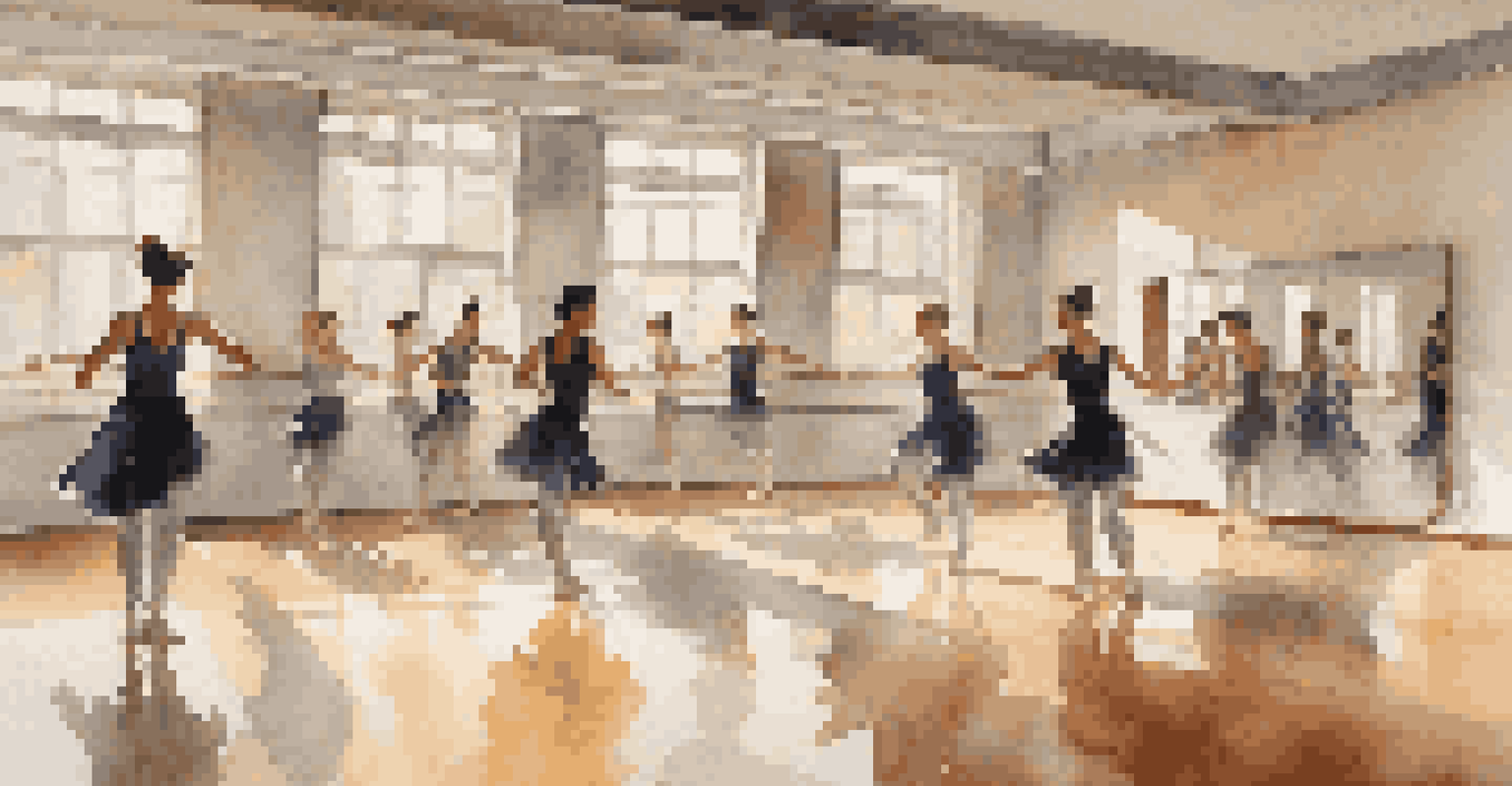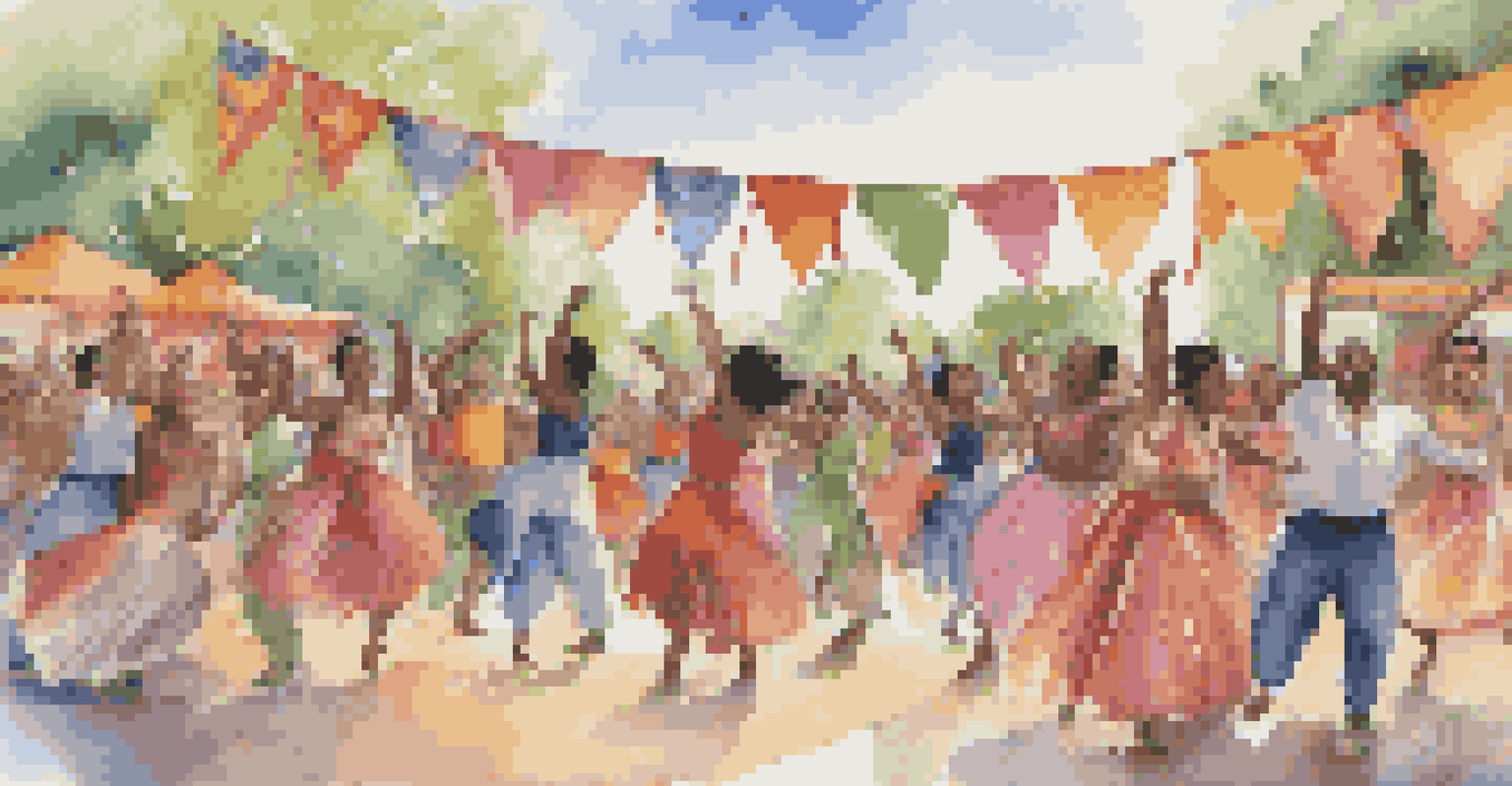The Evolution of Gender Roles in Dance Across the Decades

The Roots of Dance: Gender Roles in the Early 20th Century
In the early 1900s, dance was largely a reflection of societal norms, where men took on leadership roles and women were often seen as graceful followers. The court dances of the Victorian era highlighted this dynamic, emphasizing femininity through poise and modesty. Male dancers were typically seen as the providers of strength and stability, while women embodied beauty and delicacy.
Dance is the hidden language of the soul.
As jazz emerged in the 1920s, however, this began to shift. Women started to break free from the constraints of traditional roles, showcasing their individuality and strength in dance. The flapper culture of the time encouraged women to embrace a more liberated lifestyle, which was also mirrored in their dance styles.
This decade marked the beginning of a slow but steady evolution in gender roles within dance, laying the groundwork for future generations to redefine their identities on the dance floor.
The Influence of the 1960s: Liberation and Expression
The 1960s brought about a wave of social change, with movements advocating for gender equality gaining momentum. Dance became a powerful avenue for expression, allowing both men and women to explore their identities outside of traditional roles. The rise of modern dance saw women like Martha Graham challenge the status quo, merging personal expression with political themes.

This era also witnessed the intertwining of dance with popular music, leading to the rise of styles like the Twist and the Mashed Potato. These dance crazes encouraged men and women to dance together as equals, fostering a sense of camaraderie and breaking down gender barriers. The stage was set for a more egalitarian approach to partner dancing.
Evolution of Gender Roles in Dance
Dance has transformed from a reflection of traditional gender roles to a platform embracing fluid identities and diverse expressions.
With the cultural revolution of the 60s, dance transformed into a medium for both artistic expression and social commentary, pushing the boundaries of gender roles further than ever before.
Disco Fever: Gender Fluidity in the 1970s Dance Scene
The 1970s introduced disco culture, where the dance floor became a sanctuary for self-expression and exploration of identity. This era embraced a more fluid understanding of gender roles, allowing individuals to express themselves in bold, vibrant ways. Both men and women wore flamboyant clothing, and the dance styles became more energetic and inclusive.
The dance is a poem of which each movement is a word.
Disco clubs became melting pots of creativity, where everyone was encouraged to dance freely, regardless of gender. The popularity of dance films like 'Saturday Night Fever' showcased not just the electrifying moves but also the burgeoning acceptance of diverse identities within dance culture. Men began to embrace more expressive styles while women showcased their strength and skill.
This period marked a significant turning point, as the dance floor became a space for everyone to celebrate their individuality, regardless of traditional gender norms.
The 1980s: A Clash of Tradition and Modernity
As the 1980s rolled in, dance became heavily influenced by the rise of pop culture and music videos. Artists like Michael Jackson and Madonna showcased groundbreaking choreography that blended various styles, influencing how both genders approached dance. While traditional roles remained present, the era challenged dancers to merge theatricality with athleticism.
During this time, female dancers began to take on more prominent roles in choreography, moving from merely being performers to becoming creators. This shift highlighted the growing recognition of women's contributions to dance, allowing them to express a wider range of emotions and narratives. The emergence of breakdancing also saw men and women stepping onto the streets, challenging norms in urban dance culture.
Impact of Social Movements
Social changes, particularly in the 1960s and beyond, have influenced dance as a means of challenging norms and promoting equality.
The 80s served as a battleground for traditional and modern interpretations of gender in dance, setting the stage for even greater transformations in the decades to come.
The 1990s: Embracing Diversity and Individuality
The 1990s marked a significant shift towards embracing diversity in dance styles and gender identities. With the rise of hip-hop and various world dance forms, the dance landscape became more inclusive and representative of multiple cultures. This period encouraged dancers to explore their unique backgrounds and experiences, allowing for a richer tapestry of expression.
Television shows like 'So You Think You Can Dance' and 'Dancing with the Stars' further popularized dance and showcased a broader range of talents, blurring the lines of traditional gender roles. Both male and female dancers began to be recognized for their unique skills and artistry, rather than being confined to specific genres or styles. This shift highlighted the importance of individuality over conformity.
As dance entered the mainstream, it became a platform not only for artistic expression but also for discussions around gender identity and representation, paving the way for future generations.
The 2000s and Beyond: Redefining Gender in Dance
Entering the 2000s, the conversation around gender roles in dance continued to evolve. With the rise of social media, dancers could share their work globally, leading to a wider acceptance of various styles and expressions. Gender fluidity became an integral part of the dance narrative as more individuals began to identify outside of the traditional male-female binary.
Choreographers like Travis Wall and dancers from diverse backgrounds have challenged conventions, creating spaces for everyone to shine. The popularity of dance competitions and reality TV shows has also allowed for a diverse array of performers to be showcased, emphasizing talent over gender. This has encouraged dancers to embrace all aspects of their identities, fostering a culture of acceptance.
Future of Dance and Inclusivity
The dance community is actively creating inclusive spaces, fostering creativity and acceptance for all identities in the evolving landscape.
Today, dance is more than just an art form; it is a vibrant community that celebrates diversity and challenges societal norms. The evolution of gender roles in dance reflects broader cultural shifts, showing how far we've come and the exciting journey that lies ahead.
The Future of Dance: A Continuing Journey of Equality
As we look to the future, the dance landscape is poised for even more transformative changes in gender roles. With ongoing discussions about representation and inclusivity, the dance community is actively working towards creating spaces where everyone feels welcome. The rise of technology and virtual platforms will likely continue to shape how we experience and share dance.
Emerging artists are increasingly drawing inspiration from a multitude of sources, blending styles and breaking down barriers. This fusion not only enhances creativity but also promotes a culture where gender roles are fluid and personal interpretation is valued. As we embrace this evolution, it's essential to recognize and celebrate the contributions of all dancers, regardless of gender.

The future of dance promises to be an exciting journey, one that continues to challenge conventions and embrace the uniqueness of every dancer. Together, we can create a world where everyone has the opportunity to express themselves freely through dance.